Commentary 15 Aug 2011 06:54 am
Iwerks Multiplane
- Continuing back in time looking at the multiplane camera, you have to finally reach Ub Iwerks at his studio. It’s probable that Iwerks was the first real inventor of the idea. His studio put it into use far earlier than either Disney and Fleischer. It was most probably more limited than the other two, but the germ was there. On film, the new tool appeared in 1934. At different times, both Grim Natwick and Shamus Culhane talk about Ub working furiously in the basement on a multiplane camera built out of auto parts. The camera was a horizontal multiplane camera with the cels standing up, shot against levels of depth. Looking at the existing films it’s hard to find many uses of it. I came up with two Comicolor Films – two fairy tales, that Iwerks produced.
The first is The Headless Horseman (1934), and the camera is used in a very limited way, here. In fact, the scene could have been done with multiple levels panning at different speeds. This is used only in panning scenes. I’ve taken one of these repeated scenes and illustrate with that.
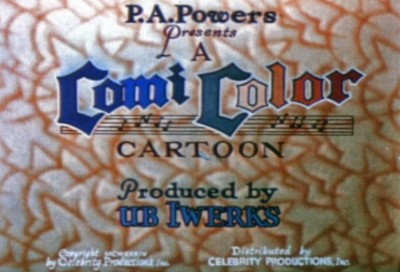 1
1
It took them a while to settle on one opening title for this series of tales.
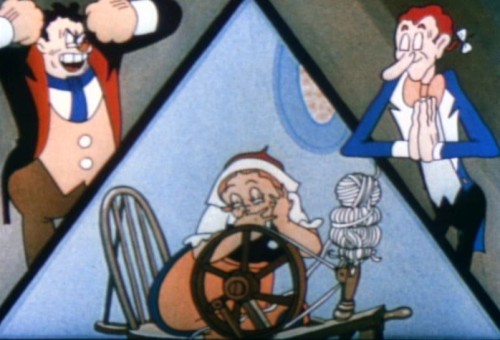 4
4
The three principal characters are introduced via
a multiple exposure three-way split screen.
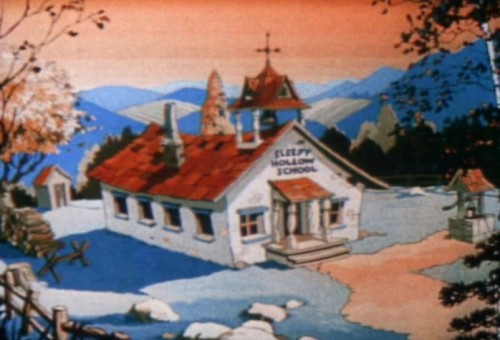 5
5
Which leads us into a flat BG of the schoolhouse.
Considering there’s a truck in, one would have thought
that the multiplane could have been used for good effect.
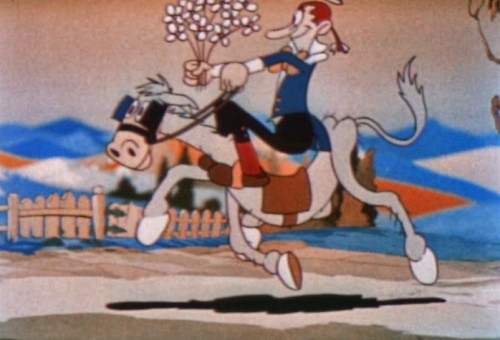 6
6
Most of its use was for these panning scenes with multiple levels
that aren’t even taking advantage of the soft focus possibilities.
 10
10
This scene has nothing to do with the multiplane camera,
I just like it.
The Valiant Tailor (1934) is much more energetic. Again, the camera is used only for panning, no camera moves in or out. The BGs are broken into multiple levels and the focus is very soft in the distant background (never in the foreground.) The levels move at different speeds and oftentimes look like they’re bicycle pans in that some parts of the levels repeat in the moves. (I can’t think of any other studio that did that.) In different scenes, it also looks as though some of the back levels have been moved closer, to a more foreground position. The shadows animate over the surface of the ground they touch.
 1
1
This is the only film that uses this criss-crossed BG.
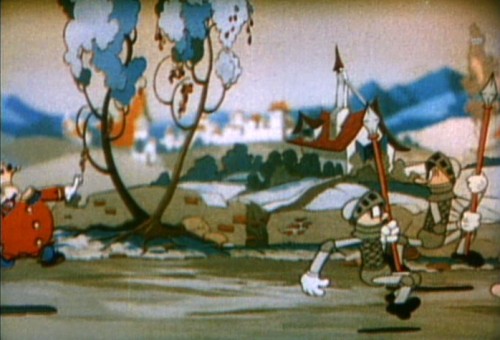 7
7
The sharp focus of the foreground level against the soft BG
is the feature of this scene. It plays so well in motion.
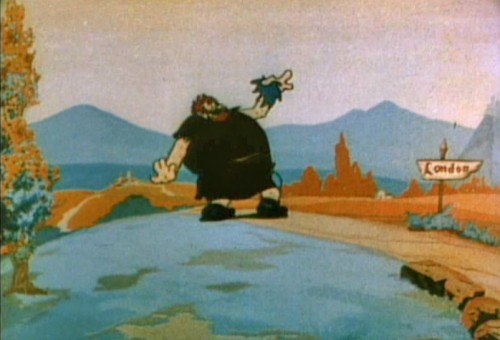 15
15
We cut to this flat scene . . .
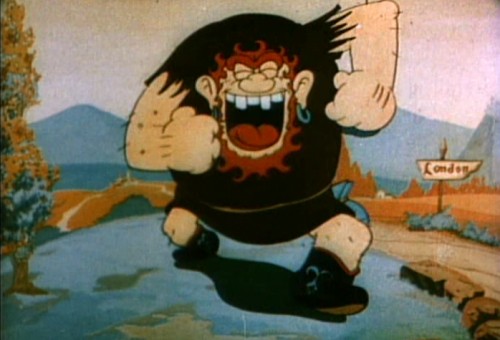 16
16
. . . but it’s very dynamic.
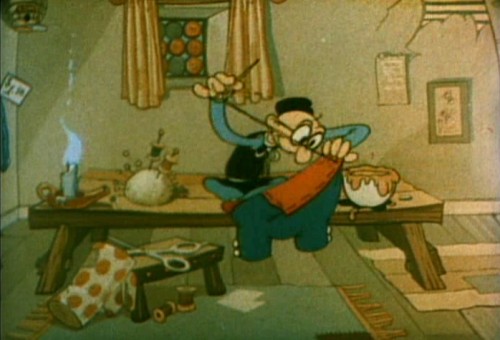 17
17
The tailor is flat in this first scene, but
the scene seems to be purposefully dim.
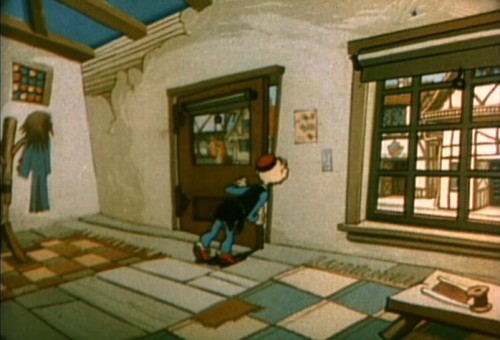 18
18
When he goes to the door, the bright, sharp focus outdoors
tells us this was shot on the multiplane.
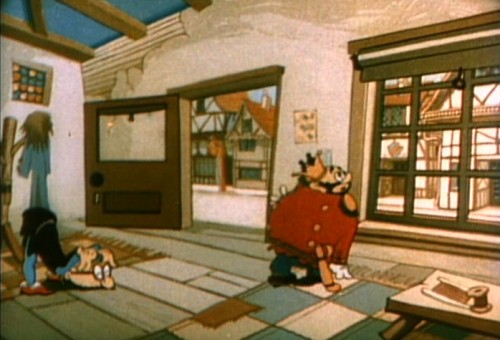 19
19
This exposure really shows how it should’ve been exposed throughout.
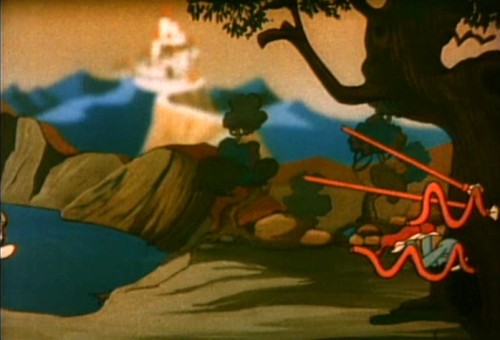 21
21
Again, it’s the sharp focus against the soft that makes this effective.
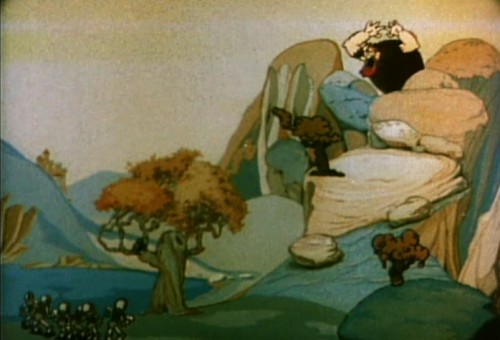 22
22
A flat scene cut into two using multiplane.
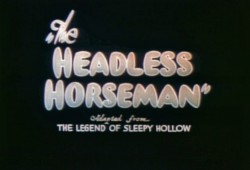
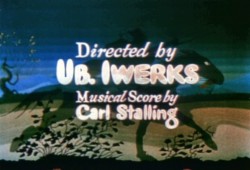
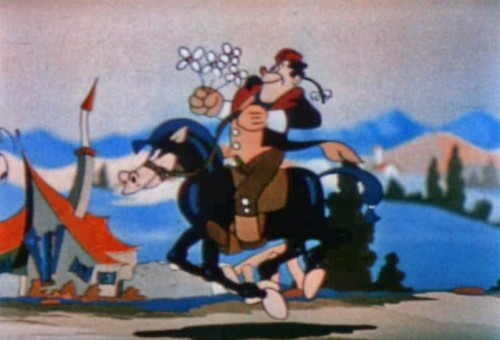
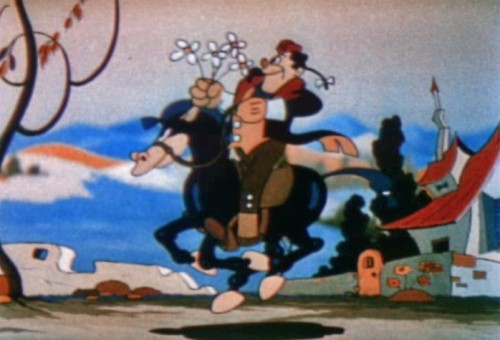
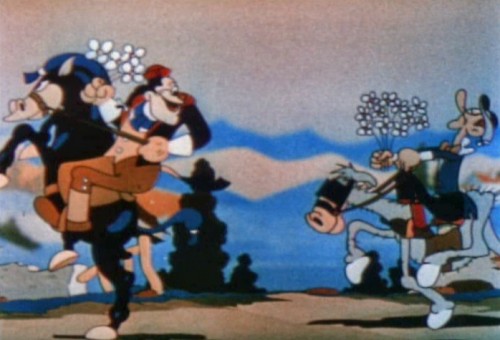
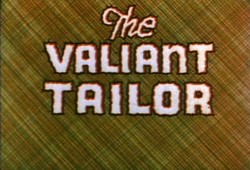
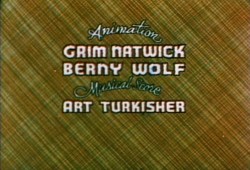
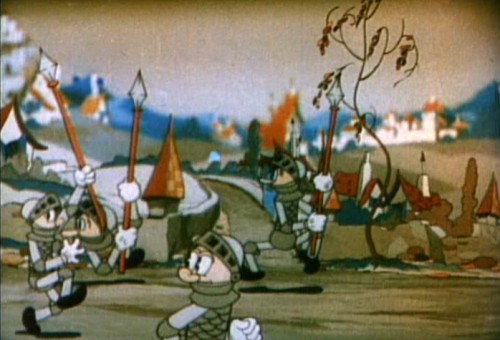
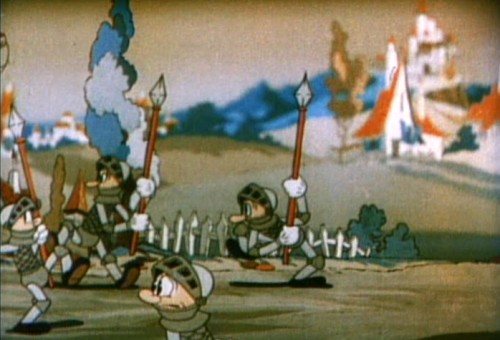
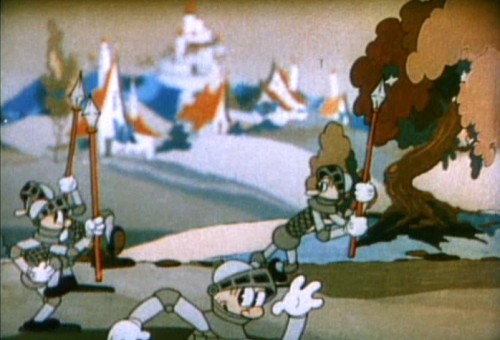
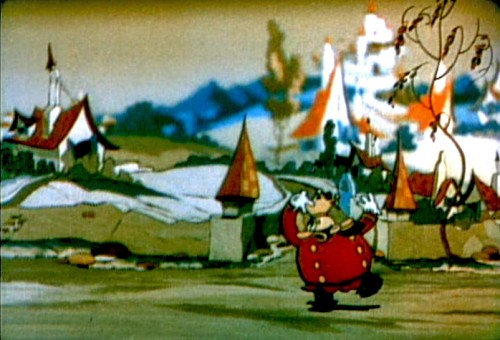
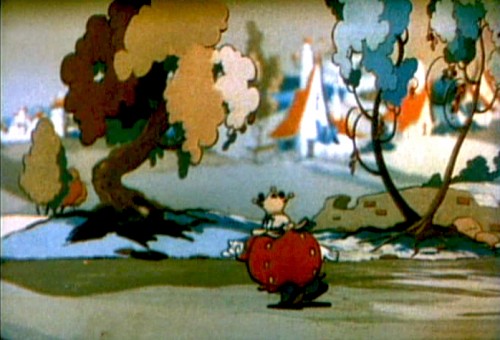
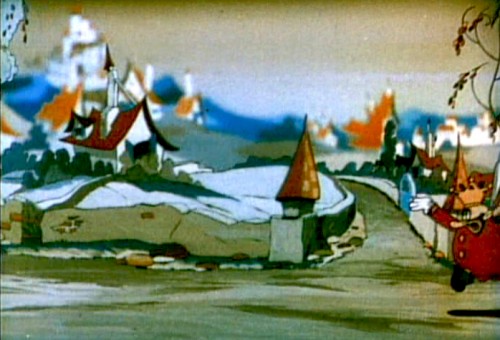
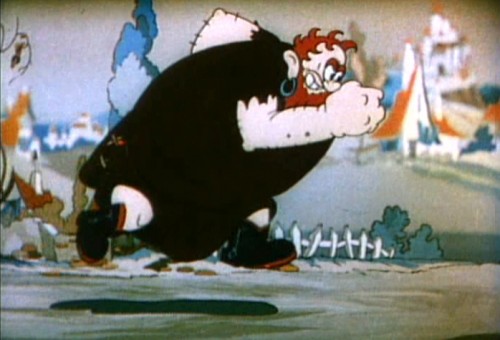
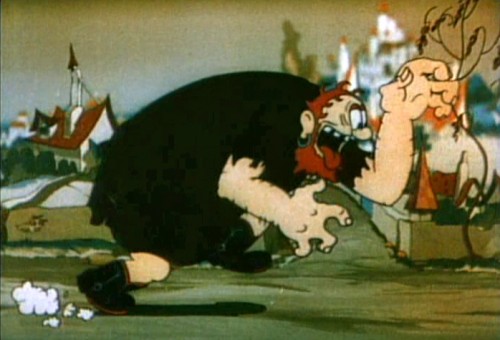
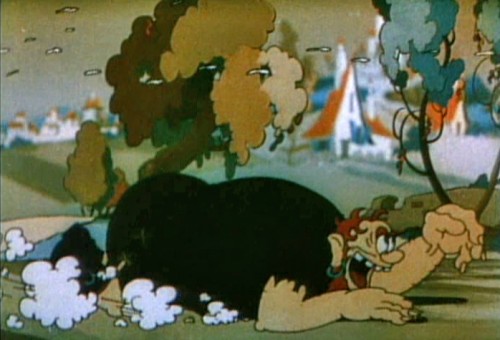
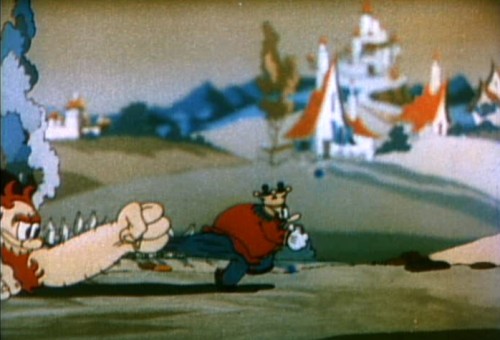
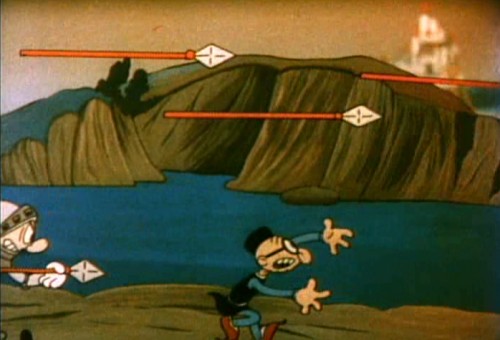
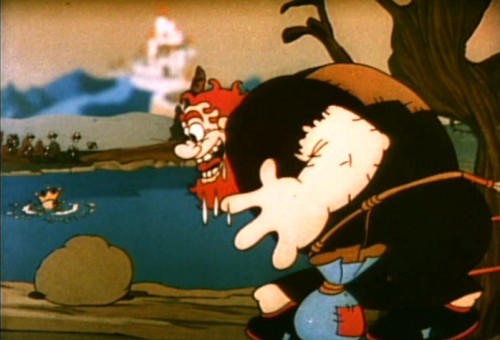
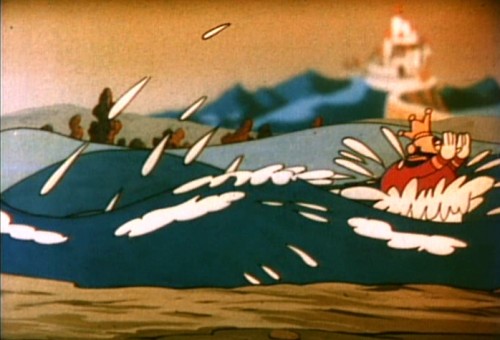
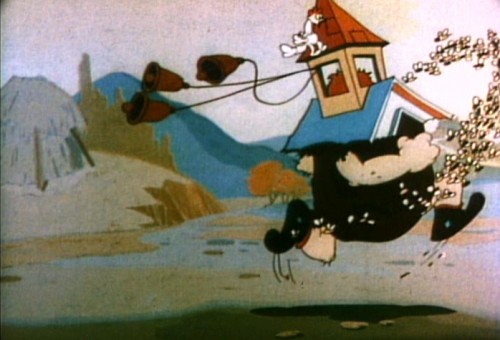
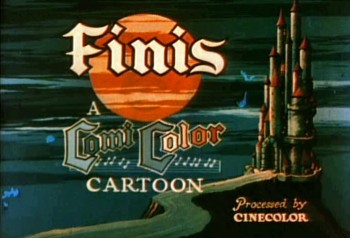

on 15 Aug 2011 at 1:49 pm 1.Stephen Worth said …
Lots of incredible Grim drawings in today’s post! Thanks!
on 15 Aug 2011 at 8:03 pm 2.Pierre said …
As much as I liked the multiplane effects, I really like the animated dolly around Ichabod’s desk to reveal the book he’s reading. That was a very clever layout trick (which you see in quite a lot of Anime, oddly enough). I think this must be the earliest example I’ve ever seen!
on 15 Aug 2011 at 11:26 pm 3.Michael said …
I absolutely agree with you, Pierre. I originally included that scene, but didn’t want to confuse it with the multiplane scenes. I wanted to make sure that I was a little disappointed in one of the first uses of the multiplane camera.
on 19 Aug 2011 at 1:52 am 4.John said …
I Believe ‘The Cave Man’ (Willie Whopper) made use of Iwerks’ multiplane before both the films you’ve cited. As far as being far earlier than Fleischers, ‘The Cave Man’ was released July 6, 1934- a little over a month before Fleischers’ ‘Poor Cinderella’ which was released Aug.3. ‘The Headless Horseman’ was released Oct.1. There may be earlier examples from either studios but I can’t think of them at the moment. At any rate, I think of the multiplane and turntable cameras as two distinctly different processes each with it’s own unique (& wonderful) qualities.
on 12 Oct 2011 at 1:14 am 5.Eddie Fitzgerald said …
Comment on the post “Iwerks’ Multiplane,” 8/11/11: I wonder if Milt Gross worked on this “Headless Horseman” cartoon, maybe without credit.